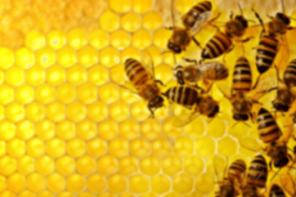Land use information is a bit difficult to pin down since different sources use different data sets, have varying dates of newly released data and sometimes definitions cause some things to be measured differently. I’ve sorted through a ton of data sets this month, putting together the Annual Honey Report took some time, and then gathering information for this piece. What I am looking for here is about how much land there is available that isn’t developed urban or suburban, farm land, pasture land, or land where things don’t grow like deserts and water.
And the best I can find seems to me to be not quite right. For instance, most references point out that urban, suburban and roads take up only 5% of available U.S. land. To me that seems low, too low. I was recently in Austin, Texas, where I lived years ago, and had to drive north from Austin to Belton, about 40 or so miles away. As I was driving it occurred to me that the freeway I was on, U.S. 35, went from Laredo, Texas all the way to Duluth, Minnesota. That’s 1558 miles. As I was speeding along at their 80 MPH stroll, I tried to measure the width of the land that held that freeway. When it was simply fence to shoulder to the first two lane road, the median, the second two lane road another shoulder and over to the next fence, I estimated about 75 yards. Of course there’s lots more where you have exit and entrance ramps, where the roads go to three or four lanes when they go through heavy urban areas, rest stops, weight stations and the like, so if I puff my estimate up just a tad, to 80 yards across on average I think I’m close and I can figure out how many square miles U.S. 35 takes up – OK, one mile is 1760 yards, so 1558 miles is 2.74 million yards long. Multiply that by 80 yards wide for 219.4 million square yards, which equals – would you believe, only 71 square miles. My Medina county land mass is 423 square miles. There are 654 million square miles of land in the U.S. so that 5% figure gives us 98 million square miles of town and road use.
Even so, figuring all the major four lane freeways that criss-cross the country and you end up with, what, maybe 1000 square miles or road space? That’s a guess, but when you look at I-90, I-94, I-80, I-83, I-80, I-95, I-70 and even I-2 and the other shorter roads you come up with not a whole lot of land, considering. So maybe that 5% is right.
There’s about 55% of our land used for crops and grassland grazing, 20% deserts and water and government owned (and used for what, one wonders?), and about 20% undeveloped woodland. You can figure there isn’t much bee forage on crop land, grassland, deserts and water and urban and road land, so you are left with that 20% undeveloped woodland as undisturbed, pesticide-free bee forage land. Not very much, I would guess, of that is good forage, or any forage, if my experience with woodland counts. So, where all this is going is, how much land, really is out there for bees to forage on that’s not been “developed” in some way or other, and it’s not much.
And why I’m looking at this is, would you believe, Varroa control. Really. Here’s why.
I’ve been dealing with Varroa mites in bee hives here since the day they arrived in this country. I didn’t know enough about them to feel afraid, challenged, or dominant. I was reading Randy Oliver’s web page recently (yup, I try to cover all the bases) and his feelings at first were that here was a challenge he felt up to and thought he’d win. Tracheal mites had toughened us up and this should be a walk in the park, thought lots of beekeepers. And lots of beekeepers didn’t get far on that walk before they saw the light.
Fast forward 30 years and absolutely every rule we knew then about keeping bees has been changed, destroyed, added to or altered by this mite. What we used to do doesn’t work, and what we have to do is not what we used to do. But you know that, right? The trick is, find out what does work. Here’s some of what I’ve found from experience, from researchers, from dedicated beekeepers, from books, magazines, the net and Dennis and Randy.
At first it was just Varroa destroying bees, but, as we all know, the evolution of this disaster brought to the fore the viruses Varroa released. Add to this the unending exposure to agricultural pesticides, not enough to eat, erratic weather, and the nosemas that go bump in the night and your bees are slowly crushed unless you interfere.
And that interference has led to this change. The best way to control Varroa is the worst way to make honey.
I’ve been working with data generated by Lloyd Harris on bee population models over time for quite some time, and using his data on bees, and a lot of data on mite population growth over time, for us here in Ohio, northeast Ohio to be specific, if we start Spring with essentially no mites, having used some effective treatment at the beginning and towards the end of last season, Varroa numbers only start to grow in late June early July. Parasitized pupae begin to increase shortly and after that it’s a race to the finish – of your colony.
So what we’ve been saying here is look ahead at what an essentially almost 0 infestation rate is on July 1 to what it will be – it essentially doubles every 12 days – in 90 days on October 1. So what we want to do here is take care of the bees that take care of the bees that go into Winter. Think of the bees that take care of grandparents – those are the nurse bees in July, which need to be clean and healthy in July, taking care of those grandparents. If your grandparents aren’t taken care of, they are weaker, live shorter lives and are passing along the viruses they have to the next generation, the parents of the bees that go into Winter, so they too are handicapped. They in turn can’t forage, can’t nurse, don’t live as long, pass along more viruses to the next generation. These are the bees who are supposed to live until April next year, but they receive the least amount of care, have the highest rate of pupae infestation and the greatest infestation of viruses. Guess how long they will live? Maybe Halloween. Maybe. By Spring, or even before, the colony is abandoned. No bees, maybe a speck of brood. Nothing. Winter bee care starts in July. I realize this is a simplistic model, but it gives a picture of colony death that’s pretty real.
Actually, it begins the previous July, when you are treating/trapping drone brood, splitting, requeening, doing something, to break brood cycles, stop Varroa cycles and clean up the colony so it goes strong into Winter and comes out clean and strong in the spring, ready to make honey, ready to swarm, ready.
And part of that is food. Enough good food, all of the time, for every bee in the bunch. We have moderate dearths here in Ohio in the summer. Forever we’ve assumed there was enough food out there though because on the other side the bees came back and made honey on our usually good Fall flow. Why bother, why check, why spend money and time on a colony that always bounces back? But they don’t bounce so good anymore, do they? With the viruses, with brood infestations, with foragers not living as long, with not as many bees, food security is an issue when it didn’t used to be. I recommend having protein available almost all Summer anymore. Sugar, better honey from richer colonies, at the ready, too. No colony should ever be food stressed. That stress, added to the rest is the tipping point, the last straw, the last gasp, the last will and testament of that colony. With even tiny infestations that late in the year, weakened bees, and not enough food, that colony is dead already, it’s just that nobody told it yet.
So when I say the best way to control Varroa is the worst way to make honey you can see what I mean. You have to be disruptive in some way – splitting, treating, requeening, cleaning up, just when there’s a honey flow on. It’s treat, or make honey. Not both at the same time. And with a weakening colony, can you make enough honey to pay for that package you’ll need next spring to replace that colony that’s already dead?
Let me know how that works out for you.
•
This model, of course doesn’t consider the Varroa bomb disaster that happens all too often. That is, a neighboring colony succombs to the viral spiral and eventually is mostly dead. Survivors are robbed, and some absond – take your pick – and surviving mites are magically transplanted to – your hive!
•
So far this Spring it hasn’t been much of a Spring. Snow has been on and off the weather forecast since March and cold had been on and off with too cold now and too hot earlier this month. We had a beautiful weekend in late April and I was able to get into the bees, remove the packing, get some protein on and generally check things out. (See Spiethroad Stories on our web page for that story). I think I should have waited. Right after the packing was off it got cold again. And snowed again. And more cold. It’s the second week of April right now, and every year since ever we’ve had to mow grass on tax day, the 15th. No way that’s going to happen this year. Maybe by the 22. Maybe. Of course this has slowed down everything that’s supposed to be blooming. And the early blooms got clobbered by that last freeze we had. It got below 28F, and that’s usually the killer frost for blooms on trees and early flowers. And it was again. So making sure there was protein on was a good idea. There’s lots of honey, lots, but a protein stress this early is just plain bad news. It’ll cause a bee shortage down the road when all the now late blooming stuff hits all at the same time and they’ll need all the bees they can muster to take advantage. It’s becoming more and more obvious that colonies are food stressed – not starved, not dead, just stressed – more than we realize and we need to do a lot more to avoid that stress. A protein patty is darn cheap insurance against that stress. Watch small hive beetle larvae (you can use them as a trap if you watch your timing. You wouldn’t believe how much chickens like both the patties and the SHB larvae in them – Chicken Candy!), and if the bees don’t eat the patty, throw it in the freezer for later this Summer. It won’t go to waste, you’ll make more honey, and you’ll have bees later this Fall. Try it and see.









